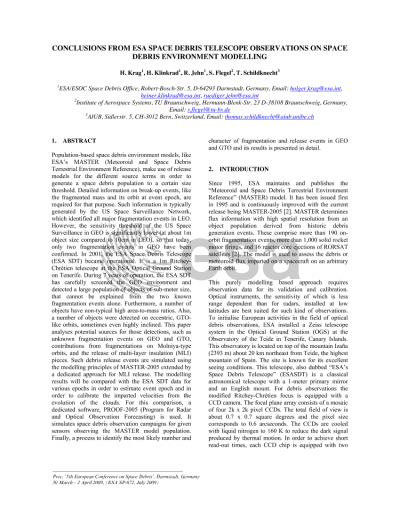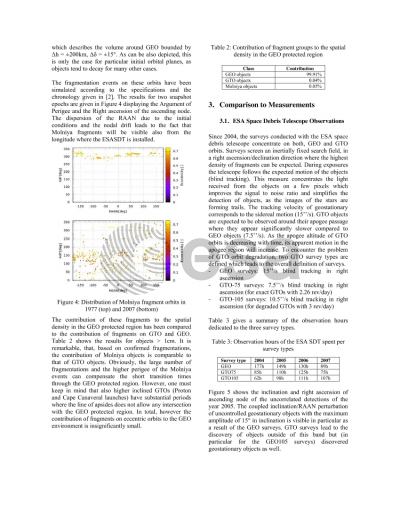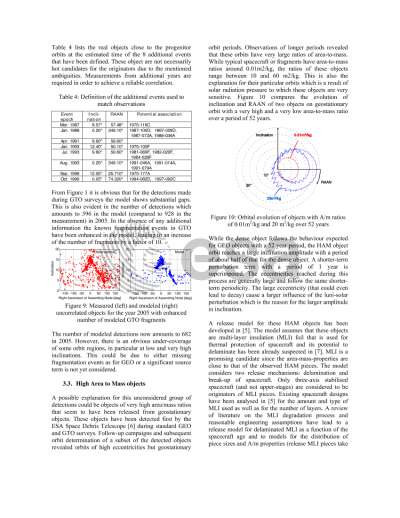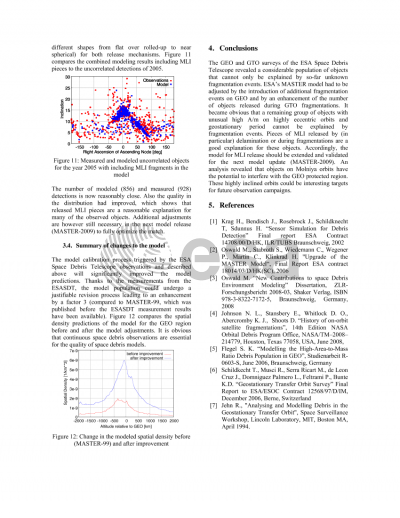Document details

Abstract
Population-based space debris environment models, like ESA's MASTER (Meteoroid and Space Debris Terrestrial Environment Reference), make use of release models for the different source terms in order to generate a space debris population to a certain size threshold. Detailed information on break-up events, like the fragmented mass and its orbit at event epoch, are required for that purpose. Such information is typically generated by the US Space Surveillance Network, which identified all major fragmentation events in LEO. However, the sensitivity threshold of the US Space Surveillance in GEO is significantly lower (at about 1m object size compared to 10cm in LEO), so that today, only two fragmentation events in GEO have been confirmed. In 2001, the ESA Space Debris Telescope (ESA SDT) became operational. It is a 1m Ritchey- Chrétien telescope at the ESA Optical Ground Station on Tenerife. During 7 years of operation, the ESA SDT has carefully screened the GEO environment and detected a large population of objects of sub-meter size, that cannot be explained from the two known fragmentation events alone. Furthermore, a number of objects have non-typical high area-to-mass ratios. Also, a number of objects were detected on eccentric, GTO-like orbits, sometimes even highly inclined. This paper analyses potential sources for those detections, such as unknown fragmentation events on GEO and GTO, contributions from fragmentations on Molniya-type orbits, and the release of multi-layer insulation (MLI) pieces. Such debris release events are simulated using the modelling principles of MASTER-2005 extended by a dedicated approach for MLI release. The modelling results will be compared with the ESA SDT data for various epochs in order to estimate event epoch and in order to calibrate the imparted velocities from the evolution of the clouds. For this comparison, a dedicated software, PROOF-2005 (Program for Radar and Optical Observation Forecasting) is used. It simulates space debris observation campaigns for given sensors observing the MASTER model population. Finally, a process to identify the most likely number and character of fragmentation and release events in GEO and GTO and its results is presented in detail.
Preview








